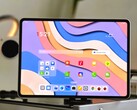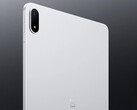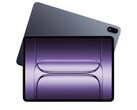Verdict on the OnePlus Pad 3
In its global version, the OnePlus Pad 3 remains a great tablet, which can compete with the best on the market. The price has already fallen significantly on the internet, so it hardly makes sense to opt for the imported version in the form of the OnePlus Pad 2 Pro or Oppo Pad 4 Pro.
Although the Chinese ColorOS software also supports many European languages and Google services can be easily installed, you can save yourself the trouble with the global model and OxygenOS. What's more, you get an update promise until 2031 and a two-year warranty without any further complications.
The tablet itself offers top performance, a bright screen, strong battery life and can also be used as a creative tablet and laptop replacement with accessories such as a keyboard cover or stylus.
It's just a shame that the manufacturer continues to do without a fingerprint sensor and a 5G option.
Pros
Cons
Price and availability
You pay $699 for the tablet directly from the manufacturer, but there are always discounts.
At amazon.com and other online retailers, there is already a discount of $50.
Table of Contents
- Verdict on the OnePlus Pad 3
- Specifications
- Case and equipment - Great unibody
- Communication and operation - Including 6 GHz
- Software and sustainability - Long update promise
- Cameras - Occasionally OK
- Display - Fast IPS without PWM
- Performance, emissions and battery life - enough power for everything
- Notebookcheck overall rating
- Possible alternatives in comparison
Specifications
Case and equipment - Great unibody
There are no changes to the chassis compared to the Chinese version in the form of the OnePlus Pad 2 Pro: the OnePlus Pad 3 also comes with a high-quality metal unibody housing and the somewhat high weight of 675 grams has remained the same.
In addition to a bluish variant, there is also a classic silver-grey model.
You can also choose whether 12 GB RAM and 256 GB mass storage are sufficient or whether you need 16 GB RAM and 512 GB mass storage. We test the small storage configuration.
A USB 3 port with a maximum data throughput of 5 GBit/s and DisplayPort support is installed. However, NFC or memory expansion using a microSD card are not included.
Communication and operation - Including 6 GHz
The OnePlus Pad 3 comes with WiFi 7 and, unlike its sister model for China, can also access the less-used 6 GHz network. In our sterile test environment, we do not see any speed advantages here; overall, the Pad 3 is even a little slower at a high level.
Unfortunately, there is no model variant with mobile communications and GPS for exact positioning is also not installed.
It is annoying that the OnePlus 3, like the Pad 2 Pro, does not have a fingerprint sensor and only allows biometric unlocking using 2D recognition via the front camera. As this is not as secure, some apps do not allow this option for biometric authentication. In our test, the face unlock function at least seems a little more reliable than on the Pad 2 Pro. The manufacturer may have helped here with a patch.
The touchscreen is scanned for touches up to 120 times per second and can therefore be controlled very precisely.
| Networking | |
| OnePlus Pad 3 | |
| iperf3 transmit AXE11000 6GHz | |
| iperf3 receive AXE11000 6GHz | |
| OnePlus Pad 2 Pro | |
| iperf3 transmit AXE11000 | |
| iperf3 receive AXE11000 | |
| Apple iPad Air 13 2025 | |
| iperf3 transmit AXE11000 6GHz | |
| iperf3 receive AXE11000 6GHz | |
| Samsung Galaxy Tab S10+ | |
| iperf3 transmit AXE11000 | |
| iperf3 receive AXE11000 | |
| iperf3 transmit AXE11000 6GHz | |
| iperf3 receive AXE11000 6GHz | |
| Average 802.11 a/b/g/n/ac/ax/be | |
| iperf3 transmit AXE11000 | |
| iperf3 receive AXE11000 | |
| iperf3 transmit AXE11000 6GHz | |
| iperf3 receive AXE11000 6GHz | |
| Average of class Tablet | |
| iperf3 transmit AXE11000 | |
| iperf3 receive AXE11000 | |
| iperf3 transmit AXE11000 6GHz | |
| iperf3 receive AXE11000 6GHz | |
Software and sustainability - Long update promise
One major difference is that OxygenOS is used as the software interface instead of ColorOS. Although both use Android 15 as the basic framework, Google Play Services and apps are activated and pre-installed by default on OxygenOS. The software interface is very similar on both systems.
OnePlus promises to update the Pad 3 until 2031, i.e. for 6 years from the device's release. The manufacturer does not say exactly how many Android versions there will be, but as there are four versions for high-end smartphones, you can probably expect more or less the same for the Pad 3.
There are no concrete sustainability statements about the device, although the packaging is plastic-free.
Cameras - Occasionally OK
The 8-megapixel camera on the front takes pretty decent photos, but they could be a little more colorful. The camera is also quickly dazzled by backlighting.
The main camera with 13 megapixels is sufficient for snapshots, but the dynamic range of the images leaves a lot to be desired. Videos can be recorded in a maximum of 4K at 30 fps. The quality is quite decent, and the autofocus and exposure compensation do a good job.
Given the size of the tablet, the cameras are more likely to be used for scanning documents. They do this quite well, also thanks to a special mode in the software.
Image comparison
Choose a scene and navigate within the first image. One click changes the position on touchscreens. One click on the zoomed-in image opens the original in a new window. The first image shows the scaled photograph of the test device.
Hauptkamera PflanzeHauptkamera UmgebungHauptkamera Low Light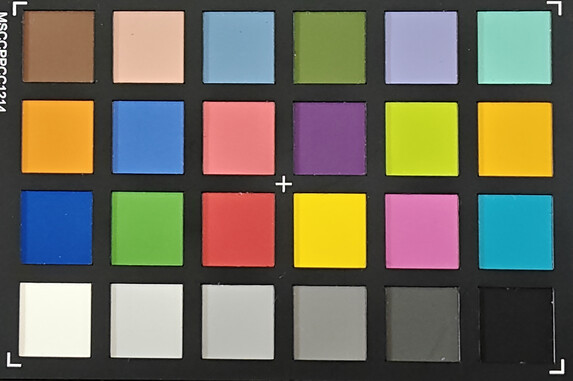

Display - Fast IPS without PWM
Nothing has changed in the display compared to the Chinese model: It still measures a huge 13.2 inches and has a resolution of 3,392 x 2,400 pixels.
The maximum brightness is just under 700 cd/m² and is therefore also suitable for outdoor use. If you like streaming, you can also enjoy HD content from major providers in full quality without any problems thanks to Widevine certification.
Thanks to the IPS screen with up to 144 Hz frame rate, movements are fluid. We did not notice any PWM flickering, so even sensitive users can use the tablet without any problems.
| |||||||||||||||||||||||||
Brightness Distribution: 88 %
Center on Battery: 691 cd/m²
Contrast: 1184:1 (Black: 0.58 cd/m²)
ΔE ColorChecker Calman: 2.03 | ∀{0.5-29.43 Ø4.78}
ΔE Greyscale Calman: 1.8 | ∀{0.09-98 Ø5}
97.6% sRGB (Calman 2D)
Gamma: 2.159
CCT: 6727 K
| OnePlus Pad 3 IPS, 3392x2400, 13.2" | OnePlus Pad 2 Pro LTPS LCD, 3392x2400, 13.2" | Apple iPad Air 13 2025 IPS, 2732x2048, 12.9" | Samsung Galaxy Tab S10+ Dynamic AMOLED 2X, 2800x1752, 12.4" | |
|---|---|---|---|---|
| Screen | 2% | -1% | -34% | |
| Brightness middle (cd/m²) | 687 | 691 1% | 607 -12% | 471 -31% |
| Brightness (cd/m²) | 641 | 643 0% | 576 -10% | 473 -26% |
| Brightness Distribution (%) | 88 | 87 -1% | 87 -1% | 97 10% |
| Black Level * (cd/m²) | 0.58 | 0.6 -3% | 0.5 14% | |
| Contrast (:1) | 1184 | 1152 -3% | 1214 3% | |
| Colorchecker dE 2000 * | 2.03 | 2.01 1% | 1.52 25% | 3.1 -53% |
| Colorchecker dE 2000 max. * | 3.38 | 2.86 15% | 3.5 -4% | 5.8 -72% |
| Greyscale dE 2000 * | 1.8 | 1.7 6% | 2.2 -22% | 2.4 -33% |
| Gamma | 2.159 102% | 2.193 100% | 2.197 100% | 2.06 107% |
| CCT | 6727 97% | 6615 98% | 6929 94% | 6746 96% |
* ... smaller is better
Screen Flickering / PWM (Pulse-Width Modulation)
| Screen flickering / PWM not detected | |||
In comparison: 53 % of all tested devices do not use PWM to dim the display. If PWM was detected, an average of 8149 (minimum: 5 - maximum: 343500) Hz was measured. | |||
Display Response Times
| ↔ Response Time Black to White | ||
|---|---|---|
| 31 ms ... rise ↗ and fall ↘ combined | ↗ 15.8 ms rise | |
| ↘ 15.2 ms fall | ||
| The screen shows slow response rates in our tests and will be unsatisfactory for gamers. In comparison, all tested devices range from 0.1 (minimum) to 240 (maximum) ms. » 83 % of all devices are better. This means that the measured response time is worse than the average of all tested devices (20.3 ms). | ||
| ↔ Response Time 50% Grey to 80% Grey | ||
| 38.1 ms ... rise ↗ and fall ↘ combined | ↗ 21.4 ms rise | |
| ↘ 16.7 ms fall | ||
| The screen shows slow response rates in our tests and will be unsatisfactory for gamers. In comparison, all tested devices range from 0.165 (minimum) to 636 (maximum) ms. » 56 % of all devices are better. This means that the measured response time is worse than the average of all tested devices (31.7 ms). | ||
Performance, emissions and battery life - enough power for everything
The Snapdragon 8 Elite is Qualcomm's top-of-the-line SoC and the OnePlus Pad 3 can keep up with or even beat other top tablets. The power is easily sufficient for all currently available apps, you can also run several applications at the same time and there is still no visible stuttering.
The heat build-up under load is slightly higher than the OnePlus Pad 2 Pro's but is still within an acceptable range and very limited locally. We noticed throttling in the 3DMark stress tests. This is more pronounced than in the Chinese version, but still within reasonable limits.
Eight speakers are built into the tablet and it achieves a decent sound, which could be a bit fuller at times. If you prefer to connect headphones or speakers, you can do so via USB-C or Bluetooth. The most important audio codecs are available for the latter.
A full charge takes around 90 minutes, but you have to get the necessary power adapter for the international version yourself, as it is not included. At 12,140 mAh, the battery is generously dimensioned and lasted almost 24 hours in our WLAN test, which is enough for several days of continuous use without charging.
| PCMark for Android - Work 3.0 | |
| Average Qualcomm Snapdragon 8 Elite (14366 - 27428, n=23) | |
| Samsung Galaxy Tab S10+ | |
| OnePlus Pad 2 Pro | |
| OnePlus Pad 3 | |
| Average of class Tablet (4622 - 27428, n=80, last 2 years) | |
| OnePlus Pad 3 | OnePlus Pad 2 Pro | Samsung Galaxy Tab S10+ | Average 256 GB UFS 4.0 Flash | Average of class Tablet | |
|---|---|---|---|---|---|
| AndroBench 3-5 | -2% | -30% | 2% | -41% | |
| Sequential Read 256KB (MB/s) | 3796 | 3864.83 2% | 3574.3 -6% | 3664 ? -3% | 1739 ? -54% |
| Sequential Write 256KB (MB/s) | 3329 | 3317.21 0% | 554.67 -83% | 2701 ? -19% | 1295 ? -61% |
| Random Read 4KB (MB/s) | 316 | 303.59 -4% | 218.43 -31% | 381 ? 21% | 243 ? -23% |
| Random Write 4KB (MB/s) | 368 | 345.84 -6% | 374.09 2% | 405 ? 10% | 276 ? -25% |
(±) The maximum temperature on the upper side is 40.8 °C / 105 F, compared to the average of 33.7 °C / 93 F, ranging from 20.7 to 53.2 °C for the class Tablet.
(-) The bottom heats up to a maximum of 47.5 °C / 118 F, compared to the average of 33.2 °C / 92 F
(+) In idle usage, the average temperature for the upper side is 25.4 °C / 78 F, compared to the device average of 30 °C / 86 F.
3DMark Steel Nomad Stress Test
| 3DMark | |
| Wild Life Stress Test Stability | |
| OnePlus Pad 2 Pro | |
| OnePlus Pad 3 | |
| Samsung Galaxy Tab S10+ | |
| Wild Life Extreme Stress Test | |
| OnePlus Pad 2 Pro | |
| Apple iPad Air 13 2025 | |
| OnePlus Pad 3 | |
| Samsung Galaxy Tab S10+ | |
| Solar Bay Stress Test Stability | |
| OnePlus Pad 2 Pro | |
| Apple iPad Air 13 2025 | |
| OnePlus Pad 3 | |
| Samsung Galaxy Tab S10+ | |
| Steel Nomad Light Stress Test Stability | |
| Apple iPad Air 13 2025 | |
| OnePlus Pad 2 Pro | |
| OnePlus Pad 3 | |
| Samsung Galaxy Tab S10+ | |
OnePlus Pad 3 audio analysis
(+) | speakers can play relatively loud (85.2 dB)
Bass 100 - 315 Hz
(±) | reduced bass - on average 10.1% lower than median
(±) | linearity of bass is average (8.7% delta to prev. frequency)
Mids 400 - 2000 Hz
(±) | higher mids - on average 5.6% higher than median
(+) | mids are linear (6.6% delta to prev. frequency)
Highs 2 - 16 kHz
(±) | higher highs - on average 5.1% higher than median
(±) | linearity of highs is average (8.6% delta to prev. frequency)
Overall 100 - 16.000 Hz
(+) | overall sound is linear (12.4% difference to median)
Compared to same class
» 19% of all tested devices in this class were better, 5% similar, 76% worse
» The best had a delta of 7%, average was 21%, worst was 129%
Compared to all devices tested
» 10% of all tested devices were better, 2% similar, 88% worse
» The best had a delta of 4%, average was 24%, worst was 134%
Samsung Galaxy Tab S10+ audio analysis
(+) | speakers can play relatively loud (85.6 dB)
Bass 100 - 315 Hz
(±) | reduced bass - on average 9.1% lower than median
(±) | linearity of bass is average (10% delta to prev. frequency)
Mids 400 - 2000 Hz
(+) | balanced mids - only 3.5% away from median
(+) | mids are linear (3.5% delta to prev. frequency)
Highs 2 - 16 kHz
(+) | balanced highs - only 4.1% away from median
(+) | highs are linear (5.9% delta to prev. frequency)
Overall 100 - 16.000 Hz
(+) | overall sound is linear (10.2% difference to median)
Compared to same class
» 7% of all tested devices in this class were better, 4% similar, 89% worse
» The best had a delta of 7%, average was 21%, worst was 129%
Compared to all devices tested
» 4% of all tested devices were better, 1% similar, 94% worse
» The best had a delta of 4%, average was 24%, worst was 134%
| OnePlus Pad 3 12140 mAh | OnePlus Pad 2 Pro 12140 mAh | Apple iPad Air 13 2025 mAh | Samsung Galaxy Tab S10+ 10090 mAh | |
|---|---|---|---|---|
| Battery runtime | -1% | -45% | -65% | |
| WiFi v1.3 (h) | 23.9 | 23.7 -1% | 13.2 -45% | 8.4 -65% |
| Reader / Idle (h) | 46.6 | 25.5 | ||
| H.264 (h) | 24.4 | 13.8 | ||
| Load (h) | 4.8 | 5 |
Notebookcheck overall rating
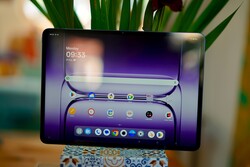
Like its sister models OnePlus Pad 2 Pro and Oppo Pad 4 Pro, the OnePlus 3 is a very good tablet with plenty of power and long battery life.
It is also easy to get without importing from China and comes with a long update promise.
OnePlus Pad 3
- 08/27/2025 v8
Florian Schmitt
Possible alternatives in comparison
Image | Model / Review | Price | Weight | Drive | Display |
|---|---|---|---|---|---|
| OnePlus Pad 3 Qualcomm Snapdragon 8 Elite ⎘ Qualcomm Adreno 830 ⎘ 12 GB Memory, 256 GB | Amazon: $579.99 List Price: 699€ | 675 g | 256 GB UFS 4.0 Flash | 13.20" 3392x2400 315 PPI IPS | |
| OnePlus Pad 2 Pro Qualcomm Snapdragon 8 Elite ⎘ Qualcomm Adreno 830 ⎘ 12 GB Memory, 256 GB | Amazon: 1. $12.99 LiuShan Compatible with OneP... 2. $10.99 KEANBOLL 2 Pack Designed for... 3. $25.59 DWaybox Shockproof Case for ... List Price: 550€ | 675 g | 256 GB UFS 4.0 Flash | 13.20" 3392x2400 315 PPI LTPS LCD | |
| Apple iPad Air 13 2025 Apple M3 ⎘ Apple M3 9-Core GPU ⎘ 8 GB Memory, 128 GB NVMe | Amazon: $649.00 List Price: 949€ | 616 g | 128 GB NVMe | 12.90" 2732x2048 265 PPI IPS | |
| Samsung Galaxy Tab S10+ MediaTek Dimensity 9300+ ⎘ ARM Immortalis-G720 MP12 ⎘ 12 GB Memory, 256 GB | Amazon: 1. $779.99 Samsung Galaxy Tab S10+ Plus... 2. $749.99 Samsung Galaxy Tab S10+ Plus... 3. $359.99 SAMSUNG Galaxy Tab S10 FE 12... List Price: 1119€ | 571 g | 256 GB UFS 4.0 Flash | 12.40" 2800x1752 266 PPI Dynamic AMOLED 2X |
Transparency
The selection of devices to be reviewed is made by our editorial team. The test sample was freely purchased by the author at his/her own expense. The lender had no influence on this review, nor did the manufacturer receive a copy of this review before publication. There was no obligation to publish this review. As an independent media company, Notebookcheck is not subjected to the authority of manufacturers, retailers or publishers.
This is how Notebookcheck is testing
Every year, Notebookcheck independently reviews hundreds of laptops and smartphones using standardized procedures to ensure that all results are comparable. We have continuously developed our test methods for around 20 years and set industry standards in the process. In our test labs, high-quality measuring equipment is utilized by experienced technicians and editors. These tests involve a multi-stage validation process. Our complex rating system is based on hundreds of well-founded measurements and benchmarks, which maintains objectivity. Further information on our test methods can be found here.






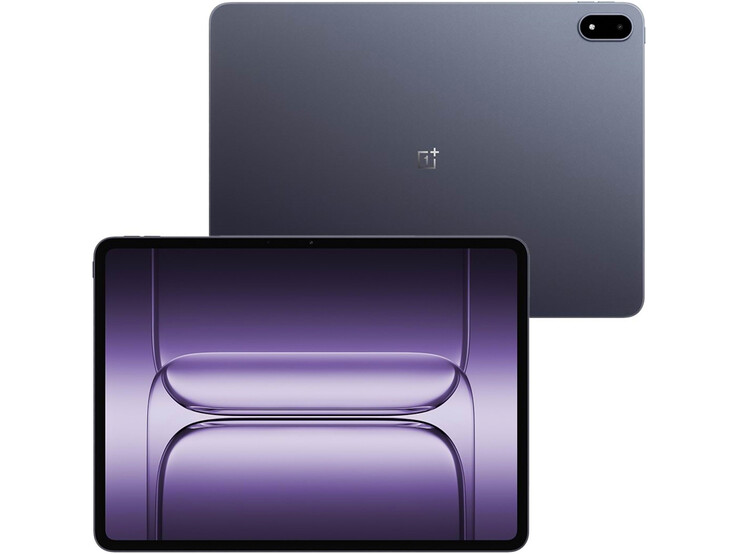







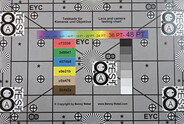




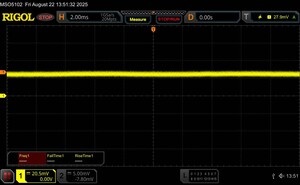
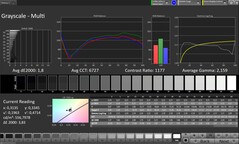
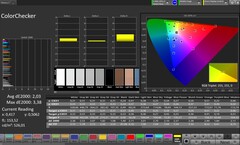
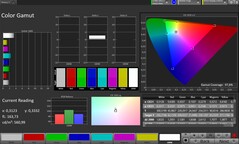
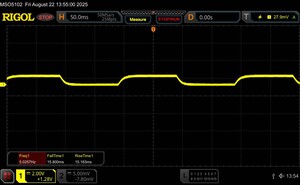
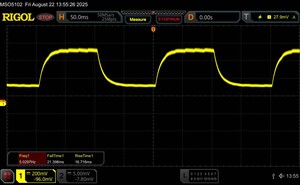
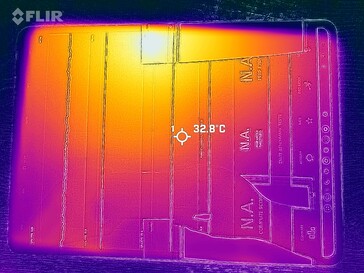
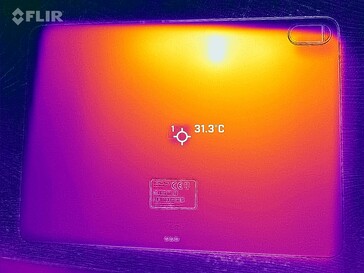
 Total Sustainability Score:
Total Sustainability Score: 





